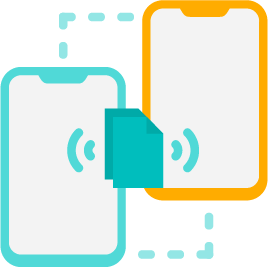Remote Onboarding and Hiring:
Best Practices for Employers

In today’s rapidly evolving workforce, remote hiring and onboarding have become essential for many employers. With the rise of flexible work environments, it’s crucial to adapt hiring and onboarding processes to ensure they are just as effective online as they are in person.
Read on to explore strategies and tips for employers to successfully hire and onboard remote employees, ensuring a seamless experience for both the company and the new hire.
Remote Hiring: How to Make the Process Effective
An effective hiring process is a vital first step in building a remote team. Employers must adapt the usual, traditional hiring methods to fit the virtual environment.
How?
Well, here are some key strategies that you could try out:

1. Use Video Interviews
Video interviews help employers get a clearer sense of a candidate’s personality and communication skills, which are crucial for remote work. Platforms like Zoom, Microsoft Teams, or Google Meet allow for face-to-face interaction despite physical distance.
Tip: Keep interviews focused on key competencies for remote work, such as self-motivation and communication abilities.

2. Utilize Online Skills Assessments
For technical roles, online skills assessments can be particularly helpful. Tools like Codility or HackerRank allow candidates to demonstrate their technical expertise.
Tip: Consider using industry-specific assessments to ensure you’re testing the relevant skills for the job.

3. Clear Job Descriptions and Expectations
Remote work requires clear communication. Be sure to outline expectations, working hours, and the type of collaboration tools the company uses.
Tip: Provide candidates with an understanding of your remote work culture and the communication tools you use (e.g., Microsoft Teams, Slack, Asana). This will help them understand how they’ll fit into the team.

4. Engage Multiple Team Members in the Interview Process
Include other team members in the interview process to get different perspectives on the candidate.
Tip: Schedule separate interviews with HR, hiring managers, and potential future teammates to assess how well the candidate would integrate into your team dynamics.
Remote Onboarding: Making the Process Engaging
Onboarding is critical in setting the tone for a new employee’s experience at your company, but it can be more challenging when done remotely. Here are some ideas and strategies to create an engaging and comprehensive remote onboarding process:
1) Create a Structured Onboarding Program
Develop a detailed, step-by-step plan that guides the new hire through the first few weeks. Include company values, the remote work culture, policies, and important procedures.
Tip: Use platforms like BambooHR or WorkBright to organize and automate parts of the onboarding process, allowing the new hire to complete necessary paperwork and training on their own time.
2) Introduce the New Hire to the Team
Remote onboarding can feel isolating, so make sure to introduce the new employee to the team in an engaging way. Host virtual meet-and-greets or video calls so they can get to know everyone.
Tip: Set up a team welcome channel on Slack or Teams to give new hires a space to connect with colleagues in an informal way.
3) Offer Training and Development Resources
Provide access to online training modules, video tutorials, and other resources to help them understand company processes and tools.
Tip: Offer onboarding sessions that are interactive, such as virtual workshops, lunch-and-learns, or Q&A sessions with various departments.
4) Check In Regularly During the First Few Weeks
Remote employees can sometimes feel disconnected, so regular check-ins are important. Schedule weekly one-on-one meetings to see how they’re adjusting.
Tip: Use a combination of informal check-ins and formal meetings to ensure they feel supported but also have a chance to discuss challenges and ask questions.
5) Foster Engagement with Virtual Social Activities
Although remote employees may not have in-person interactions, it’s important to create a sense of belonging. Consider hosting virtual coffee breaks or casual social events to help the new hire feel connected to the team.
Tip: Set up fun activities such as virtual trivia, icebreaker games, or book clubs to keep the team engaged.
Tips and Resources to Improve Remote Hiring and Onboarding
To enhance your remote hiring and onboarding processes, consider these tips and resources:
- Invest in Collaborative Tools: Tools like Slack, Microsoft Teams, and Zoom are essential for fostering communication and collaboration in a remote work environment. Consider investing in tools that can help your team work seamlessly, share documents, and track projects.
- Use Online Onboarding Platforms: Platforms like Talmundo or ClearCompany can streamline your onboarding process by guiding new hires through tasks, paperwork, and training modules, all from one central platform.
- Focus on Candidate Experience: A positive candidate experience is vital. Ensure your communication is clear and timely. Be transparent about the hiring timeline and the next steps. Use tools like Greenhouse or Lever to manage the hiring process and keep candidates informed.
- Offer Ongoing Support and Feedback: Onboarding doesn’t end after the first week. Offer continuous support and feedback throughout the first few months to help new employees thrive in their remote roles. Create channels for feedback and open dialogue, ensuring employees feel heard and valued.
Remote hiring and onboarding can be an exciting opportunity for employers to expand their talent pool while offering employees the flexibility they desire. Take the time to create an inclusive and engaging experience for your remote employees, and they will feel more connected and ready to contribute to your company’s success.

Additional resources to assist with your remote hiring processes!
WorkBright is a tool designed specifically for remote onboarding, making the process seamless and easy.
BambooHR is a platform that offers automated onboarding and helpful resources for HR teams.
Lever is a recruitment tool that simplifies the hiring process, including for remote teams.
Greenhouse is an applicant tracking system (ATS) that helps streamline the hiring and onboarding process